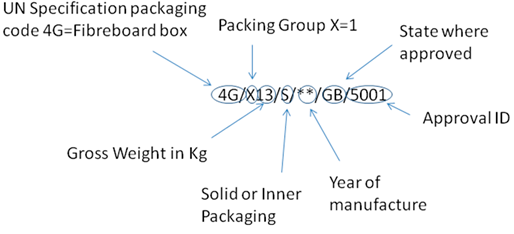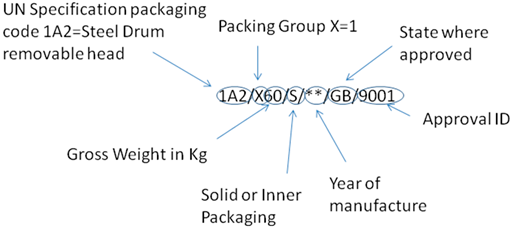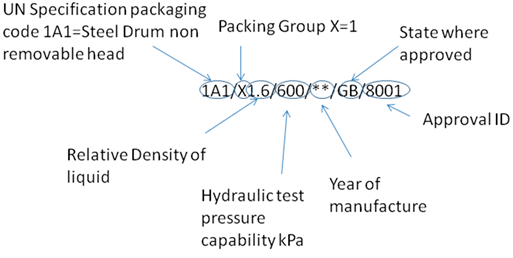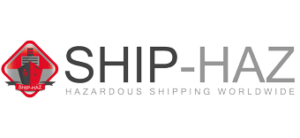What are dangerous goods?
Dangerous goods are articles or substances that are capable of posing a significant risk to Health, Safety, Property or the Environment. There are over 700 individual dangerous goods listings within the dangerous goods regulations.
What regulations govern transportation of dangerous goods
The transport of dangerous goods is subject to modal regulations that follow the Recommendations of the U.N. Committee of Experts on the Transport of Dangerous Goods (commonly referred to as ‘The Orange Book’). The relevant authorities for the various modes of transport available are:
1. The International Civil Aviation Organisation for the transport of dangerous goods by air,
2. International Maritime Organisation for dangerous goods by sea, and
3. ADR/RID regulatory guides for transporting dangerous goods by road and rail through Europe. (DOT for USA)
Each of these regulatory guides spells out the legal position and associated responsibilities of a shipper.
Despite ICAO producing the regulatory statements for transporting dangerous goods by air, the more commonly used guides are produced by IATA (The International Air Transport Association).
What proof is there that packing meets regulation standards?
For each United Nations approved package there is a test certificate, which is issued by a state and details:
- The name of the body that the certification is issued to (Quite often this is the manufacturer).
- The packaging type – for example, 4G, 1A1 or 3H2.
- Material information; including the type of material used – for example, corrugated fibreboard or steel.
- Any closure methods – for example 50mm tape.
- If inner packagings were used, then the quantity contained within them.
- The packaging tests that were applied; drop test, stack test, etc.
- The packing group(s) that the packaging is approved for – I, II or III.
- The UN approval mark.
- Conditions of issue (usually found on the back of the certificate.
In order to remain compliant, the packaging must be used in exactly the same way as it was tested and approved.
What is UN approved packaging?
Packaging which has been designed, tested and certified to enable the safe transportation of Dangerous Goods. The packaging itself will have passed sufficient tests stipulated in the relevant regulations, which means the manufacturer designing the packaging must adhere to strict guidelines and ensure the packaging passes a number of tests in order to prove it can provide the safe transportation of the dangerous goods. To gain UN approval, the manufacturer’s package is sent to and tested by an independent testing company, if the packaging successfully passes the tests, it is then sent for verification to the relevant state approval authority for approval and then assigned a UN Mark which is printed on the packaging.
Must all packagings used to transport dangerous goods bear a UN mark?
Simply put, no. Not all packagings used for transporting dangerous goods must bear a UN approval mark. There are some packagings that do not require a UN mark but do still need to meet a number of requirements, including their capability of passing various packaging tests and the quality of material used. They may also likely require combination packaging – but this does not apply to all packagings.
You can identify whether or not a substance or material requires UN approved packaging by looking at the relevant packaging instruction for the associated UN number.
What do the registered markings with UN Nations (UN) symbol mean?
A UN mark identifies that a packaging has been approved to United Nations standards for the transport of dangerous goods by road, sea and/or air. A UN mark will usually be made up of a number of numbers and letters, directly following a ‘UN’ logo. The below is an example of a UN mark that would be displayed on an approved fibreboard box – known as a 4G package.

Similarly, the next example relates to a UN approved steel drum with a removable head – given the UN packaging type identification ‘1A2’.

The same drum (with a non-removable head) has a different UN mark – note the ‘1A2’ identification for a removable head and ‘1A1’ for a removable head – as below:

What is the difference between everyday packaging and packaging for dangerous goods?
Dangerous goods packaging differ considerably to everyday packaging, such as household boxes used to store and transport. For example, there are specific measures that must be taken to ensure that, should a package containing dangerous goods fall from a shelf or wagon, that the substance or materials inside remain safe. There must be precautions taken to limit the likelihood of harm.
What are the UN numbers for Infectious Substances?
All Class 6 – Infectious Substances (Division 6.2), are or will be assigned to one of four UN Numbers;
UN2814, Infectious substance, affecting humans
UN2900, Infectious substance affecting animals
UN3291, Clinical waste unspecified n.o.s or (Bio) medical waste n.o.s or Regulated medical waste n.o.s
UN3373, Biological Substance Category B.
What are the categories for Infectious Substances?
Infectious substances that come under Class 6 Infectious Substances (Division 6.2) are divided into 3 categories.
Category A; An infectious substance that if an exposure occurs when transported is capable of causing permanent disability, life threatening or fatal disease in otherwise healthy humans.
Category B; An infectious substance which does not meet the criteria for inclusion in Category A.
Exceptions; There are a number of exceptions listed in the regulations, for example; substances that are unlikely to cause disease in humans or animals, patient specimens where there is a minimum likelihood that pathogens are present, or medical equipment potentially contaminated with or containing infectious substances. You must refer to the relevant regulations to identify whether your substance falls under exceptions as some exceptions do require specific packaging when transporting.
What are the packing instructions for Infectious Substances?
When transporting any of the 4 UN numbers UN2814, UK2900, UN3291, UN3373 you must adhere to the relevant packing instructions for the mode of transport(s) used.
UN2814 = P620
UN2900 = P620
UN3291 = P622 (or P621 ADR)
UN3373 = P650.
What packaging is required for Infectious Substances UN2814, UN2900 & UN3373
Infectious Substances that fall in both Category A and Category B (excluding UN3291) require triple packaging; this consists of:
- Leakproof primary receptacle(s)
- Leakproof secondary packaging
- Absorbent material
- Cushioning (if more than 1 primary receptacle, they must be individually wrapped)
- Rigid outer *UN approved packaging (*UN Approved required for Category A only).
What is Outer Packaging?
Outer Packaging simply put is the outer protection of a composite or combination packaging. Placed inside the outer packaging would be the inner receptacles or inner packaging, as well as any absorbent or cushioning material needed to contain and protect the inner(s).
Will Biodegradable Chips used in 4GV Eco Range dissolve in water?
The biodegradable chips used in the ECO range of 4GV will dissolve in water, this is a key property in it being able to perform as a biodegradable product.
Users of 4GV Eco Range packaging should be aware that the cushioning material will remain fit for purpose under normal conditions of transport and if packed in the manner in which it has been approved.
Leakage from contents should be a consideration in the transport of dangerous goods, ensure inner packaging’s are closed correctly and there is sufficient absorbent and containment which can be supplied for this packaging.
If there is concern over the leakage of an inner packaging this should be addressed to ensure there is no scope for this to happen, using secondary means of closure should be considered depending on the relevant packing instructions.
The 4GV Eco Range combination packaging has been UN approved and is a reliable environmentally friendly package that if used correctly will perform as intended.
FAQ didnt solve your problem?
Here are several ways to contact us
Services Provided
SHIP-HAZ Worldwide offers comprehensive training to clients for the shipping of infectious and biological substances in compliance with DOT and IATA/ICAO regulations. They also provide HazMat Shipping Training across all transport regulations and hazard classes as well as consultancy which can aid packaging development and other services that help bring companies in compliance with DOT and International regulations.
- Biological Shipping Training – for infectious and biological substances
- General HazMat Shipping Training
- HazMat Consultancy Services
If you require HazMat Shipping Training or Consultancy Services, SHIP-HAZ Worldwide will be able to provide you with a bespoke solution tailored to your needs.
HazMat Training
We understand the importance of selecting and correctly assembling the right packaging for hazardous materials. DOT and IATA Regulations state that all shippers of HazMat goods must complete a training course and gain certification before they are permitted to ship hazardous goods. As a packaging manufacturer who is often required to provide advice and support on regulated packaging, it is clear that not everyone understands how to select and use packaging compliantly.
By working alongside SHIP-HAZ Worldwide, we are now able to assist shippers who are looking to purchase HazMat packaging but who have not yet completed or need to re-validate their relevant hazardous goods shipper course by connecting them with training provider SHIP-HAZ Worldwide.

